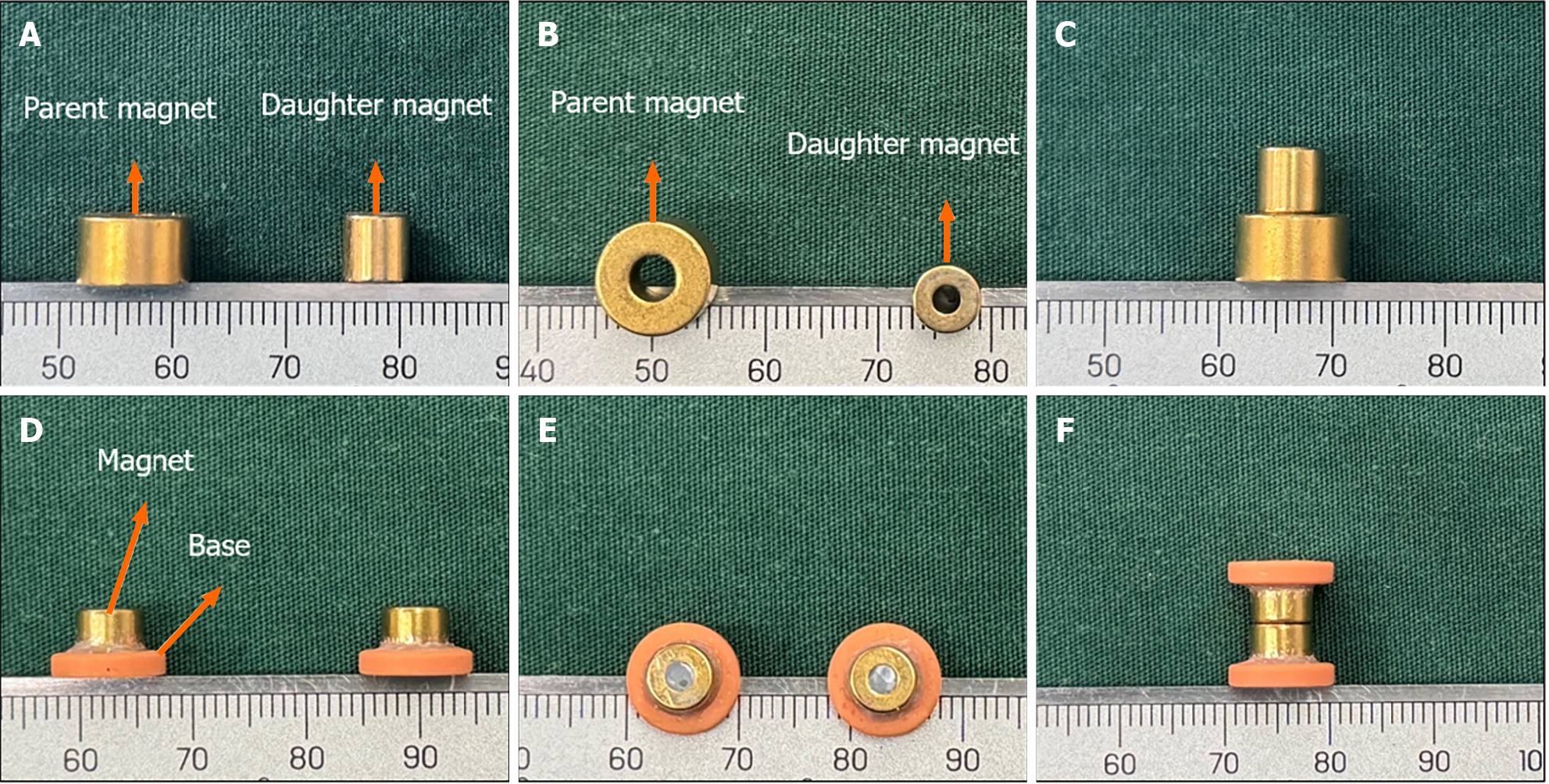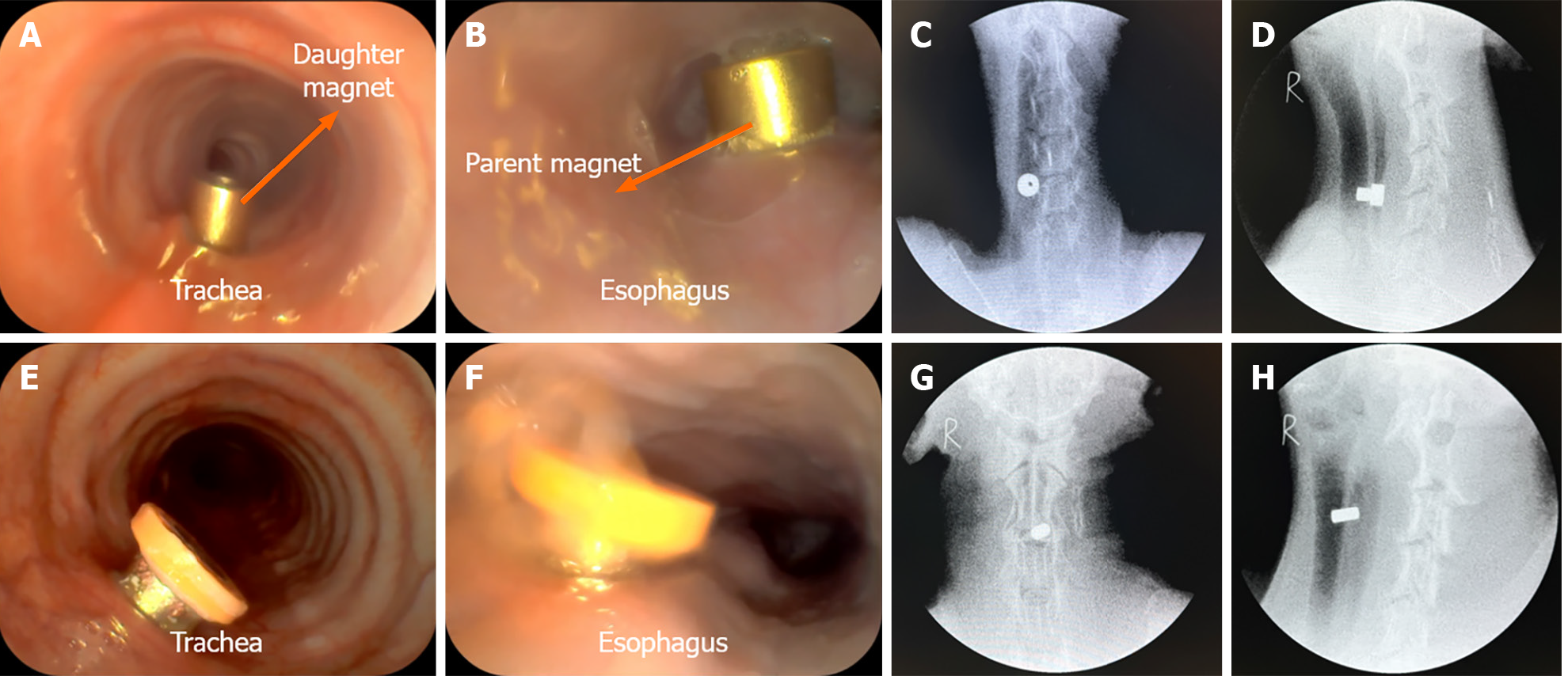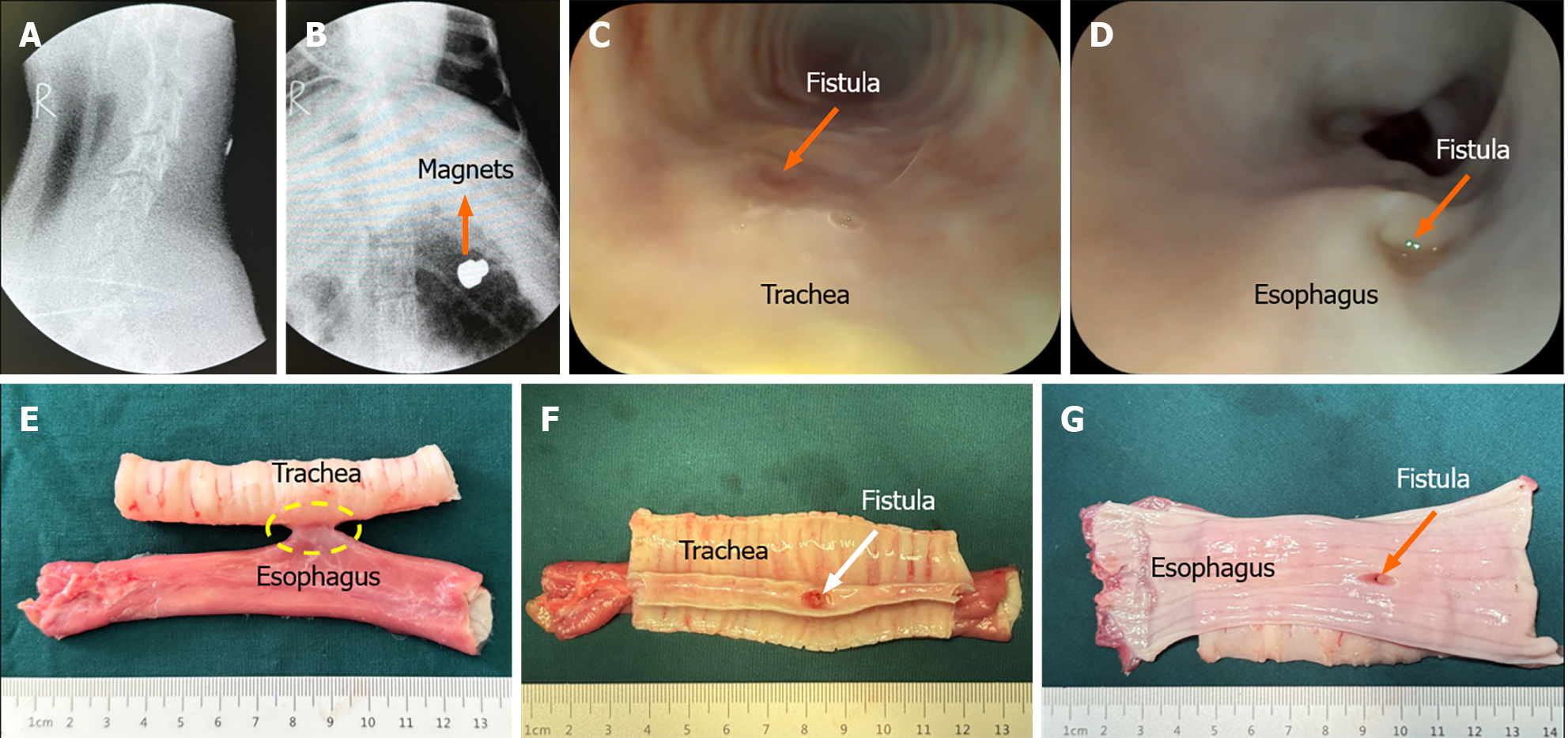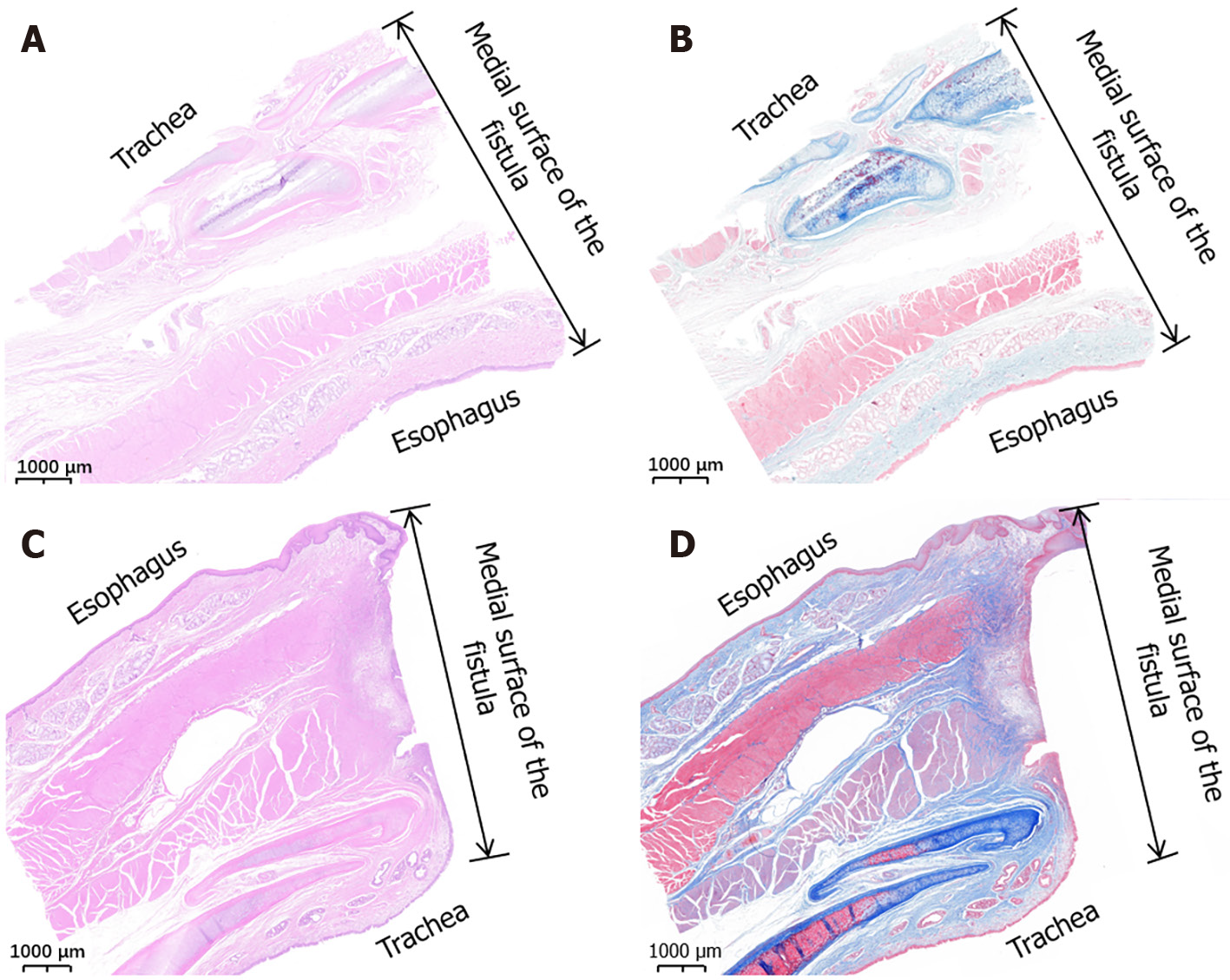Copyright
©The Author(s) 2024.
World J Gastroenterol. Apr 28, 2024; 30(16): 2272-2280
Published online Apr 28, 2024. doi: 10.3748/wjg.v30.i16.2272
Published online Apr 28, 2024. doi: 10.3748/wjg.v30.i16.2272
Figure 1 Conventional cylindrical magnets and T-shaped magnet scheme used for the magnetic compression technique.
A-C: The daughter magnet and parent magnet used in the control group; D-E: The T-shaped magnets used in the study group.
Figure 2 Schematic diagram of the magnetic compression process.
A: The daughter magnet was inserted into the trachea of control dogs; B: The parent magnet was inserted into the esophagus of the control dog where it was then attracted with the daughter magnet; C: The parent magnet and daughter magnet fall off into the distal end of the esophagus, and the tracheoesophageal fistula (TEF) is established in the control group; D: The T-shaped magnet was inserted into the trachea of study dogs; E: Another T-shaped magnet was inserted into the esophagus of the study dog where it attracted with the magnet in the trachea; F: The endotracheal magnet was removed under endoscopy; the endoesophageal magnet entered the distal end of the esophagus; and the TEF was established in the study group. DM: Daughter magnet; PM: Parent magnet; TEF: Tracheoesophageal fistula.
Figure 3 Surgical procedure.
A: Endotracheal daughter magnet seen under endoscopy in the control group; B: Endoscopic view of the esophageal parent magnet in the control group; C and D: Fluoroscopy showing that the parent and daughter magnets were coupled and retained in the target location in the control group; E: Endotracheal magnet seen under endoscopy in the study group; F: Endoscopic view of the esophageal magnet in the study group; G and H: Fluoroscopy showing that the magnets were coupled and retained in the target location in the study group.
Figure 4 Gross tracheoesophageal fistula specimens from the control group.
A and B: At 6-9 d after surgery, the magnets left the neck and entered the stomach; C: Bronchoscopy showing a fistula located in the posterior wall of the trachea; D: Gastroscopy showing a fistula located in the anterior wall of the esophagus; E: Gross specimen of tracheoesophageal fistula; F: Gross specimen showing the fistula in the trachea; G: Gross specimen showing the fistula in the esophagus.
Figure 5 Gross tracheoesophageal fistula specimens from the study group.
A and B: At 2 wk after surgery, the magnet positions had not changed; C: Bronchoscopy showing a fistula located in the posterior wall of the trachea; D: Gastroscopy showing a fistula located in the anterior wall of the esophagus; E: Gross specimen of tracheoesophageal fistula; F: Gross specimen showing the fistula in the trachea; and G: Gross specimen showing the fistula in the esophagus.
Figure 6 Histological analysis of tracheoesophageal fistula.
A and B: Hematoxylin and eosin (HE) and Masson trichrome staining of tracheoesophageal fistula from the control group (1.5 ×); C and D: HE and Masson trichrome staining of tracheoesophageal fistula from the study group (1.3 ×).
- Citation: Zhang MM, Mao JQ, Shen LX, Shi AH, Lyu X, Ma J, Lyu Y, Yan XP. Optimization of tracheoesophageal fistula model established with T-shaped magnet system based on magnetic compression technique. World J Gastroenterol 2024; 30(16): 2272-2280
- URL: https://www.wjgnet.com/1007-9327/full/v30/i16/2272.htm
- DOI: https://dx.doi.org/10.3748/wjg.v30.i16.2272














